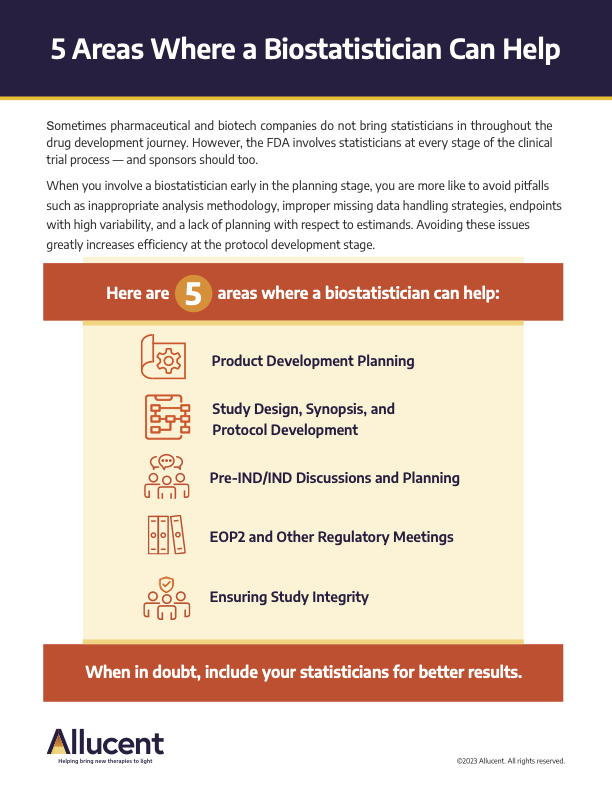The FDA acknowledges the value of statisticians, involving them at every stage of the clinical trial process – and for a good reason. High-quality patient data is intrinsic to regulatory success, and must be properly managed to ensure integrity, compliance, and safety, requiring significant clinical study oversight.
What role do biostatisticians play in relation to the core development team?
Biostatisticians can work with your team to identify key objectives from regulatory, corporate, and scientific perspectives and incorporate them into powerful study designs that minimize risk and improve decision-making. Statisticians are able to integrate with the core development team to pinpoint intercurrent events and suggest strategies to handle them while also planning for missing dara and analyzing sensitivities to test the robustness of results.
When is the best time to engage a biostatistician?
When you involve a biostatistician early in the planning stage, you are more like to avoid pitfalls such as inappropriate analysis methodology, improper missing data handling strategies, endpoints with high variability, and a lack of planning with respect to estimands. Avoiding these issues greatly increases efficiency at the protocol development stage.
Engaging biostatisticians early and often enables you to utilize advanced clinical trial analytics. Insights drawn from these analytics can help you to minimize risk and optimize the delivery of your objectives.
Conclusions regarding the use of biostatisticians
While there are numerous areas and roles where a biostatistician adds value to the drug development team, we have identified five key areas where they can make the most impact, particularly when they are included from the beginning.
Interested in learning more about biostatisticians?
Find more content related to this topic at the following links:
Blog: The Role of Statisticians in Study Design and Why to Engage them Early
Video: Hear from the A-Team: The Role of Biostatisticians

